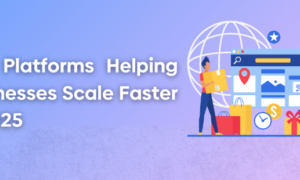Ever joined a video call, looked down at your pajama pants, and thought, “So this is work now?” You’re not the only one. The old 9-to-5 office routine is being replaced by something more flexible, digital, and often unpredictable.
Technology hasn’t just improved work—it’s completely changed it. Roles that didn’t exist ten years ago are now essential. Meetings happen over laptops, and careers can begin from a home desk with Wi-Fi.
This shift goes beyond remote jobs. It’s about how tools, platforms, and ideas are changing how we work and what we expect. In this blog, we will share how technology is reshaping work, what it means for careers, and how to prepare for what’s next.
From Fax Machines to AI Assistants
Work used to mean paper files, fax machines, and face-to-face chats. Now, AI handles emails, files live in the cloud, and your teammate could be across the country.
This isn’t just convenience—it’s transformation. Technology has taken tasks that used to take hours and shrunk them to minutes. Project management software like Asana or Monday keeps teams aligned without sticky notes or long meetings. Slack and Zoom have become office watercoolers and conference rooms.
This also means the line between “home” and “work” is blurrier than ever. You might answer a message from your manager while standing in the cereal aisle. Or brainstorm with teammates across the globe before your morning coffee.
At the center of all this are people learning to work in new ways. Some are diving into remote jobs. Others are learning how to manage teams they’ve never met in person. Many are going back to school, digitally, to keep up with the demands of this new work world.
That’s where an online master’s in CIS can make a difference. It helps people understand the systems behind the tech, not just how to use it. It teaches professionals how to manage data, security, and networks—the stuff that keeps modern businesses running smoothly. And because it’s online, it fits into this flexible, tech-enabled lifestyle that’s now the norm.
Remote, Hybrid, and the Office That Moves
Remember when “work from home” was just something freelancers did? Now it’s part of nearly every conversation about careers. Remote and hybrid models are no longer fringe benefits—they’re expectations. And they’re changing what “going to work” really means.
This flexibility has perks: no commute and more control over your schedule. A chance to set up your own workspace (which might include a cat sitting on your keyboard). But it also comes with challenges. Loneliness. Zoom fatigue. The strange feeling that you’ve both worked too much and not enough.
Technology makes this all possible. It lets people collaborate across cities, countries, and time zones. Teams don’t have to share a building to share goals but managing this well takes more than Wi-Fi. It takes trust, communication skills, and the ability to solve problems without always being in the same room.
Automation Is Coming for Tasks, Not People
Let’s talk about the elephant in the breakroom: automation. Yes, machines are getting smarter. Yes, some jobs are changing fast. But no, robots aren’t replacing everyone.
What’s really happening is that tech is taking over boring tasks—data entry, scheduling, basic customer service. This gives people space to focus on more meaningful work—like solving problems, thinking strategically, driving innovation, and communicating effectively.
For example, chatbots can handle common questions, but people are still needed when things get complex. Algorithms can sort through resumes, but hiring the right person still takes human judgment.
This means workers need to adapt. Not by becoming tech experts overnight, but by learning how to work with the tools. Knowing how to interpret data. Understanding digital platforms. Communicating clearly online. These are the new basics.
A New Kind of Work-Life Balance
Ironically, technology was supposed to make life easier. In some ways, it has. We can work from anywhere, find information in seconds and collaborate faster than ever.
But it also means work can follow us everywhere. Emails ping at dinner. Notifications light up the phone at midnight. Some people have swapped commuting stress for screen fatigue.
This makes balance harder, but not impossible. It takes intention. Setting boundaries. Logging off. Using tech to support rest, not steal it. Digital calendars can block out time for breaks. Apps can remind you to stand, stretch, or breathe.
Organizations are starting to notice this too. Many are offering flexible hours, mental health days, or even banning after-hours messages. Not because they’re generous—but because they know burnt-out workers don’t do great work.
Tech is powerful, but it’s only helpful if we use it wisely. Otherwise, it becomes just another form of noise.
What This Means for the Future
So where are we headed? That depends on how we adapt. The world of work will keep shifting. New tools will appear. Roles will evolve. Some jobs will vanish, and new ones will rise.
People who learn continuously, who stay curious, and who build digital confidence will thrive. That doesn’t mean you need to be a coder. It means you need to be comfortable with change. Comfortable with learning how tools work. Comfortable asking, “What’s the best way to do this now?”
Work isn’t just a place anymore. It’s a process. A platform. A mindset. And that mindset will shape the careers, teams, and workplaces of the future.
Whether you’re just starting out or trying to stay relevant in a fast-changing field, the connection between technology and work will only grow stronger. The good news? There’s still room for people at the center of it. People who learn. People who adapt. People who bring creativity, empathy, and thought to a world full of machines.
And maybe, just maybe, people who can finally win the battle against their overflowing inboxes.



































